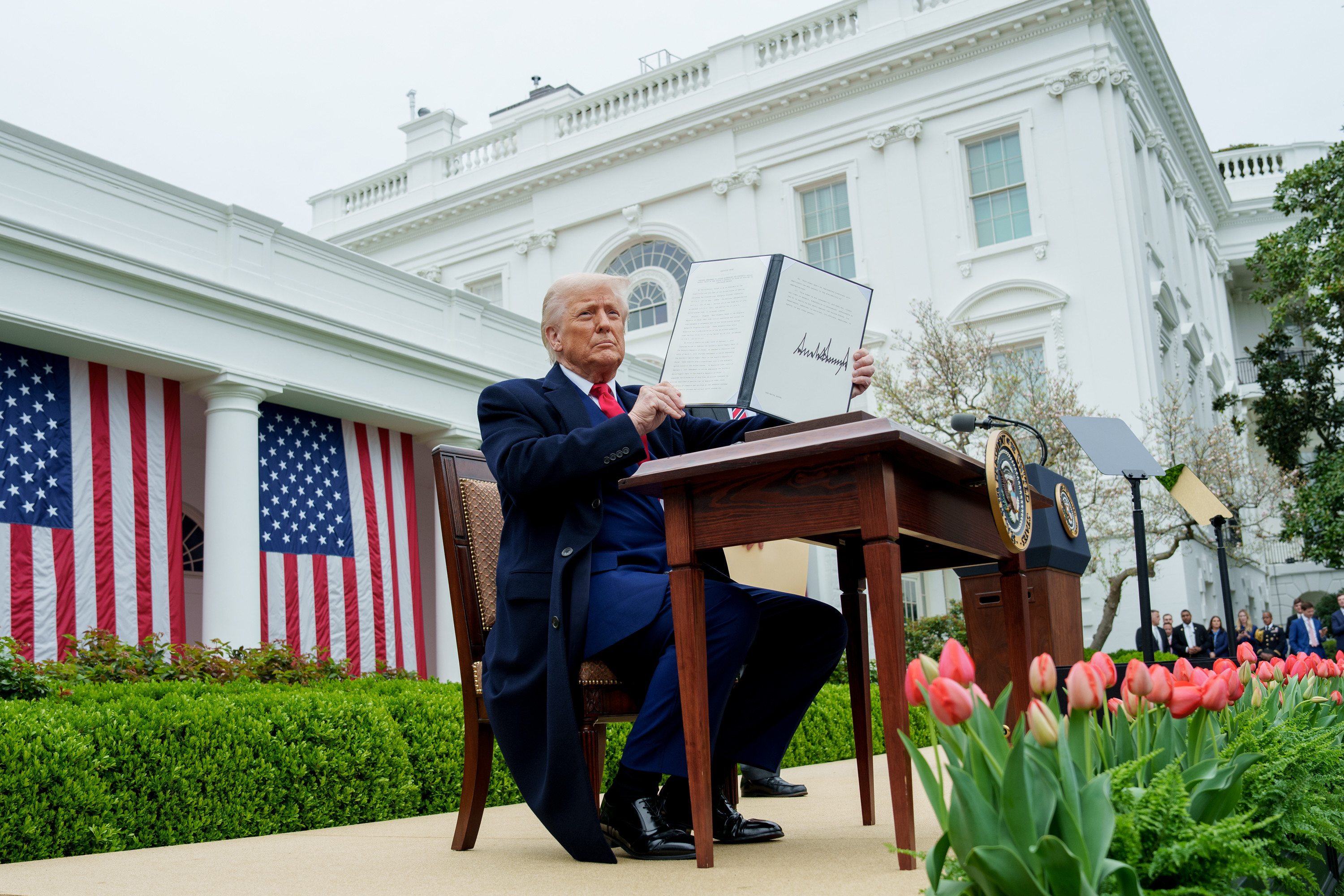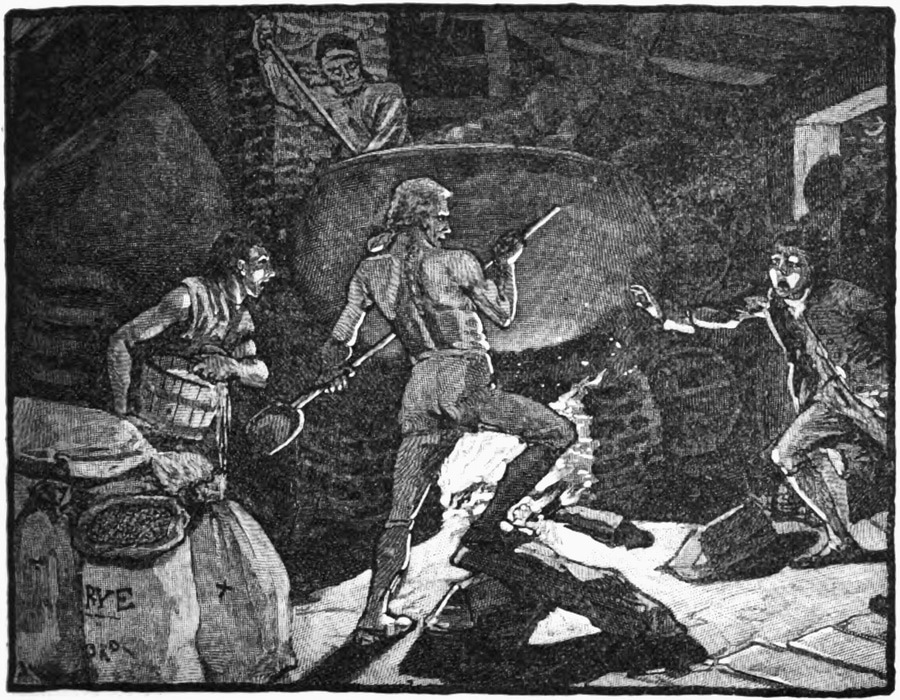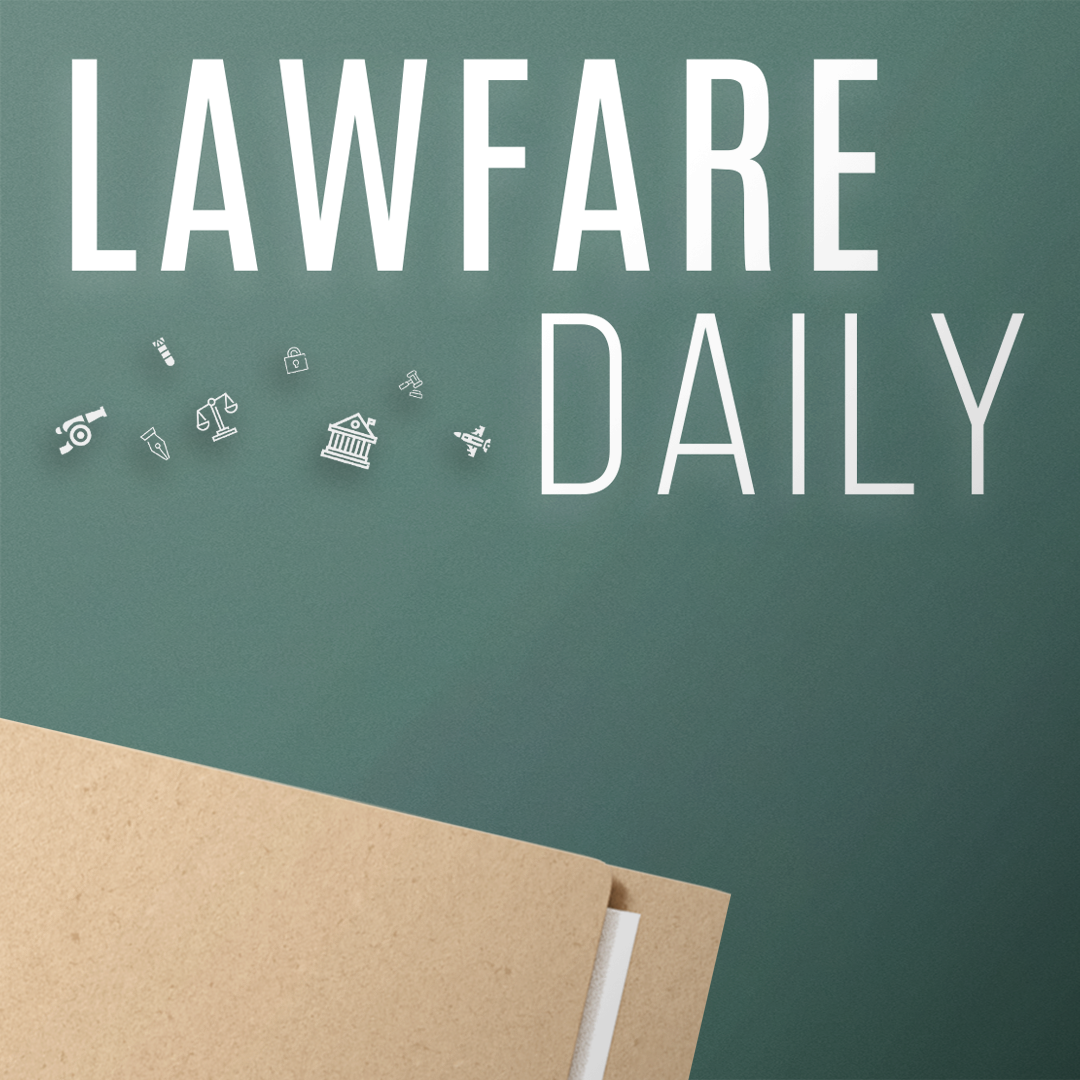The Federal Circuit Rules Trump Tariffs are Illegal

Published by The Lawfare Institute
in Cooperation With

On Aug. 29, the U.S. Court of Appeals for the Federal Circuit held that Trump’s sweeping “Liberation Day” tariffs were illegal. The 7 to 4 decision, which upheld a similar ruling from the Court of International Trade (CIT), was the third decision to find the tariffs to be beyond the president’s authority. If ultimately upheld by the Supreme Court, it will reverse a main pillar of the president’s economic policy: raising tariffs to the highest level in more than 100 years.
Still, the Federal Circuit decision is a cautious one. Despite finding the tariffs to be illegal, the court left them in place, and remanded the case to the CIT to reassess whether a nationwide injunction against them should apply. It also recognized that the International Emergency Economic Powers Act (IEEPA)—the emergency statute that President Trump invoked to impose the tariffs—could be used to justify other tariffs in the future.
That latter conclusion is particularly misguided. The statute’s text does not support it, the court’s own reasoning does not support it, and it makes for bad policy. When the Supreme Court eventually hears the case, it should take a more principled stand and reach the conclusion that the statute and common sense compel: IEEPA does not confer upon the president any tariffing authority at all.
IEEPA and the “Liberation Day” Order
In relevant part, IEEPA authorizes the president to “deal with any unusual and extraordinary threat, which has its source in whole or substantial part outside the United States, to the national security, foreign policy, or economy of the United States.” The actions it authorizes for dealing with such threats include, among other things, “regulat[ing] … importation … [of] any property.”
In invoking that statute on April 2 to impose the so-called reciprocal tariffs, Trump declared:
underlying conditions, including a lack of reciprocity in our bilateral trade relationships, disparate tariff rates and non-tariff barriers, and U.S. trading partners’ economic policies that suppress domestic wages and consumption, as indicated by large and persistent annual U.S. goods trade deficits, constitute an unusual and extraordinary threat to the national security and economy of the United States.
Because Article I of the Constitution vests the power to tax and tariff in Congress, the critical legal question presented by the order is whether Congress, by way of IEEPA, delegated to the president the authority to impose the Liberation Day tariffs.
The Federal Circuit Correctly Interprets IEEPA
The Federal Circuit ultimately concluded that it did not. The Federal Circuit’s analysis began with the text of IEEPA and observed that nothing in the statute explicitly authorizes the imposition or tariffs or duties. Instead, the closest IEEPA gets is to authorize the president to “regulate … importation” (emphasis added)—a power that has “long been understood to be distinct from the power to ‘tax.’” This, the court observed, is evident from the constitution, which “vests the two authorities in Congress separately,” and from Supreme Court precedent confirming the distinction. (The same distinction, I might add, is made in international trade agreements.) The court moreover found that in the “numerous statutes that do delegate to the President the power to impose tariffs… Congress has used clear and precise terms to delegate tariff power, reciting the term ‘duties’ or one of its synonyms.” That stands in stark contrast with IEEPA, which makes no mention of tariffs, duties or taxes at all.
In making this argument, the Federal Circuit followed the same interpretive path as forged by the District Court for the District of Columbia, which had also found the tariffs to be ultra vires (but which was not subject to the Federal Circuit’s review). That court had found that “[t]o regulate is to establish rules governing conduct; to tariff is to raise revenue through taxes on imports or exports.” Moreover, it observed that where Congress has expressly delegated tariffing authority to the president, it has done so with “procedural, substantive, and temporal limits on that authority.” Constructing IEEPA as also granting tariffing authority to the president would “eviscerate[]” those other limited delegations of authority—a result that would be “‘anomalous’ to say the least.”
But It Stops Short of Reaching the Conclusion its Interpretation Compels
While the D.C. District Court concluded that IEEPA’s text does not confer any tariffing authority upon the president at all—as did three Federal Circuit judges in an additional decision—the Federal Circuit majority stopped short of that conclusion. Instead, it layered a complementary constitutional argument on top of the textual one for why the Liberation Day tariffs, specifically, were illegal.
The Federal Circuit reasoned that given the absence of any explicit tariffing authority, interpreting IEEPA to allow the “‘unheralded’ and ‘transformative’” Liberation Day tariffs would run afoul of the major questions doctrine. That doctrine requires that presidential actions of vast “economic and political significance,” be grounded in “clear congressional authorization.” Here, the court found, the term “regulate…importation” was “’a wafer-thin reed on which to rest such sweeping power.’” In other words, IEEPA may or may not authorize some tariffs, but it definitely does not authorize these tariffs.
The Federal Circuit in fact goes on to entertain the possibility that IEEPA could authorize some tariffs that, unlike the Liberation Day tariffs, were bounded in “scope, amount, and duration” and “calculated to meet a particular national emergency.” But it is difficult to see how that conclusion can be squared with the court’s interpretation of the term “regulate.” If the power to “regulate” does not include the power to tax or tariff, then under what reading could IEEPA allow for limited tariffs? It is like saying “apple” does not mean “orange,” except when the orange is small. Either “regulate” encompasses “taxation” or it does not.
The Court Worked Backward from Bad Precedent
One reason for the court’s caution appears to be United States v. Yoshida Int’l. Inc, a 1975 decision issued by the Court of Customs and Patent Appeals. In 1971, President Richard Nixon had invoked IEEPA’s predecessor statute, the Trading with the Enemies Act (TWEA) to impose a 10 percent across-the-board tariff to address a balance of payments risk associated with the US’s decision to abandon the gold standard. In upholding Nixon’s tariffs, the court in Yoshida interpreted the term (“regulation of … importation”) to authorize the tariffing power.
The Federal Circuit devotes considerable space to reconciling its decision with that in Yoshida. Its primary concern seems to be the government’s argument that because Congress enacted IEEPA after Yoshida had been decided, Congress must have intended to ratify that opinion’s interpretation of the term “regulate.” In their additional opinion, three judges on the Federal Circuit reject this argument outright. They note that the ratification doctrine only applies where Congress “simply reenacts” a statute without change, and that there is a “judicial consensus so broad and unquestioned that we must presume Congress knew and endorsed it.” Neither condition applies here.
The Federal Circuit majority, however, treads more cautiously (again). Without deciding one way or another whether Congress did indeed ratify Yoshida’s interpretation, the Federal Circuit smartly notes that such ratification would not, in any event, render the Liberation Day tariffs legal. Yoshida’s ruling was contingent on Nixon’s tariffs being “temporary,” “limited in scope and amount,” and “calculated to help meet a particular national emergency.” Thus, the court concludes “if the ratification doctrine is to apply…we must presume that [Congress] intended for the court’s entire holding to apply, [including] its view that an unbounded tariff authority would not be permitted….”
Bad Precedent Makes Bad Policy
The problem with the Federal Circuit’s cautious ruling is that it will invite new tariffs from this and future administrations that test the vague boundaries it identifies. What is sufficiently “temporary”? What rates are sufficiently “limited” in amount? What product categories are sufficiently narrow in “scope”? For any given tariffs—if this case is any indication—those boundaries will take many months to be fully litigated, during which time they impose costs and uncertainty on businesses, consumers, investors, and the economy at large. That process is likely to repeat over and over unless and until the courts take a firmer stand in reviewing presidential emergency actions (or in the more remote event that Congress steps in). By avoiding a more direct holding, the Federal Circuit only kicked the can down the road. And given this administration’s proclivity to test the bounds of its authority, it probably did not kick it very far.
The Court of International Trade’s decision, whose decision the Federal Circuit was reviewing, illustrates this well. Forced to follow Yoshida, which formally bound it, the CIT interpreted IEEPA as conveying some tariffing power, while simultaneously recognizing that such power could not, under accepted constitutional doctrines, convey tariffing power without limits. Unlike the Federal Circuit, however, the CIT sought to define those limits concretely, by way of the Trade Act of 1974. Section 122 of that act grants authority to the president to raise tariffs in response to trade deficits, but with procedural, substantive, and temporal limits. The CIT found that those limits were specifically enacted by Congress to curb the president’s authority with respect to trade deficits, after President Nixon had invoked the TWEA to impose across-the-board tariffs for that purpose. The CIT concluded therefore that Section 122 “removes the President’s power to impose remedies in response to … trade deficits” from IEEPA and that the Liberation Day tariffs, which were predicated on the threat of “large and persistent annual U.S. goods trade deficits,” were ultra vires.
The problem with the CIT’s ruling is that, by relying on legislative history instead of IEEPA’s text, it opens the door to tariffs predicated on threats other than trade deficits, including perhaps even the Liberation Day tariffs themselves. Recall that the Liberation Day order identified as the “unusual and extraordinary threat” “underlying conditions, including a lack of reciprocity in our bilateral trade relationships, disparate tariff rates and non-tariff barriers, and U.S. trading partners’ economic policies that suppress domestic wages and consumption, as indicated by large and persistent annual U.S. goods trade deficits.” Elsewhere, the order references the “hollow[ing] out of our manufacturing base,” the “inhibit[ion] [of] our ability to scale advanced domestic manufacturing capacity,” the “undermin[ing] [of] critical supply chains,” and the “render[ing] our defense industrial base dependent on foreign adversaries.” The CIT is correct that the key “threat” underlying the reciprocal tariffs is the U.S. trade deficit in goods (indeed that threat, unlike the other threats, is in the executive order’s title), and the other conditions are either alleged causes or consequences of that deficit. But the CIT’s framing is arguably reductive, and Section 122, which addresses balance-of-payments problems, arguably does not remove from IEEPA the tariffing power to deal with those other “threats.”
Other trade statutes do cover those other “threats” and, like Section 122, can be interpreted as removing further tariffing power from IEEPA, including the authority to deal with the other putative threats identified by the order. For example, the “lack of reciprocity [], disparate tariff rates and non-tariff barriers, and U.S. trading partners’ economic policies that suppress domestic wages and consumption” could all be addressed by way of Section 301 of the Trade Act of 1974, which authorizes the executive to impose tariffs on countries that breach their international trade commitments to the U.S. or otherwise engage in unfair trade practices. Section 338 of the Tariff Act of 1930, which allows for the imposition of tariffs on the products of countries discriminating against the U.S., could provide for a similar response. The “hollow[ing] out of our manufacturing base” and the “inhibit[ion] [of] our ability to scale advanced domestic manufacturing capacity” could be addressed by way of Section 201 of the Trade Act, which authorizes the president to impose “safeguard” tariffs to protect industry from harm resulting from a sudden and unexpected surge in imports. And the “undermin[ing] [of] critical supply chains” and the “render[ing] our defense industrial base dependent on foreign adversaries” could be addressed under Section 232 of the Trade Expansion Act of 1962, which allows the president to impose tariffs on products that impair national security.
But the legislative history of those statutes and IEEPA may not support the same clean-cut division of labor that the CIT found with respect to IEEPA and Section 122. The CIT decision thus creates space, not just for future more limited IEEPA tariffs, but the very same Liberation Day tariffs predicated on a redefined threat. It sets itself up for a game of whack-a-mole.
A Better Alternative for Limiting Any IEEPA Tariffing Powers
There are better ways to impose limits on IEEPA’s tariffing authority, to the extent such authority is (wrongly, in my view) found to exist.
Yoshida, for all its faults, points to one. In deciding that case, the court observed that “Congress has said what may be done with respect to foreseeable events in the…the Tariff Act, the [Trade Expansion Act], and in the Trade Act of 1974 (all of which are in force) and has said what may be done with respect to unforeseeable events in [the TWEA].” The government’s ratification argument provides a basis for transposing this division of labor onto IEEPA, and if so transposed, the only potential tariffing authority left in IEEPA would be that not addressed through other trade statutes. As described above, that would leave no basis for the Liberation Day tariffs, and it would provide some principled and predictable limits on any tariffing authority under IEEPA.
The text of IEEPA, including in particular its condition that it only be invoked to “deal with any unusual and extraordinary threat,” provides another principled limit on any tariffing authority found within the statute. The term “unusual and extraordinary,” after all, describes something that is “rare” and “exceptional to a very marked extent.” “Emergency” means “an unforeseen combination of circumstances or the resulting state that calls for immediate action.” Together those terms provide direct support for a division of labor between non-emergency trade statutes (including but not limited to Section 122), which handle usual and ordinary threats that Congress foresaw, and IEEPA, which handles the rest. Indeed, the most obvious function of the “unusual and extraordinary” condition—which was not in the TWEA but added to IEEPA—is to prevent IEEPA from “eviscerating” other non-emergency statutes, as the Liberation Day tariffs would do here.
The Ultimate Choice
Still, neither the Federal Circuit nor the Court of International grounded their arguments in IEEPA’s “unusual and extraordinary” threat condition. That reluctance is understandable, given the history of courts deferring to the executive on the declaration of emergencies, including under IEEPA. Indeed, the government’s position is that what constitutes an “unusual and extraordinary threat” and what measures can be used to “deal with” such threats are political questions unreviewable by the courts.
But unless the Supreme Court is willing to allow IEEPA to swallow Congress’s constitutional power and every trade statute enacted since World War II—separation of powers be damned—it will have to impose some limits on any tariffing power in IEEPA. And should it wish to avoid a never-ending train of tariffs testing those limits in the future, it will have to make those limits principled and predictable. Finding tariffing authority within IEEPA, in other words, will require the Supreme Court to meaningfully circumscribe its historical deference to presidential emergency authority.
Or the Supreme Court could simply find that IEEPA contains no tariffing power at all.
Editor’s note: This is a modified excerpt from “This Is (NOT) an Emergency: On the Trump Tariffs and Emergency Powers,” 64 Colum. J. Transnat'l L. (forthcoming Dec. 2025).


.jpg?sfvrsn=8b09cc66_5)


